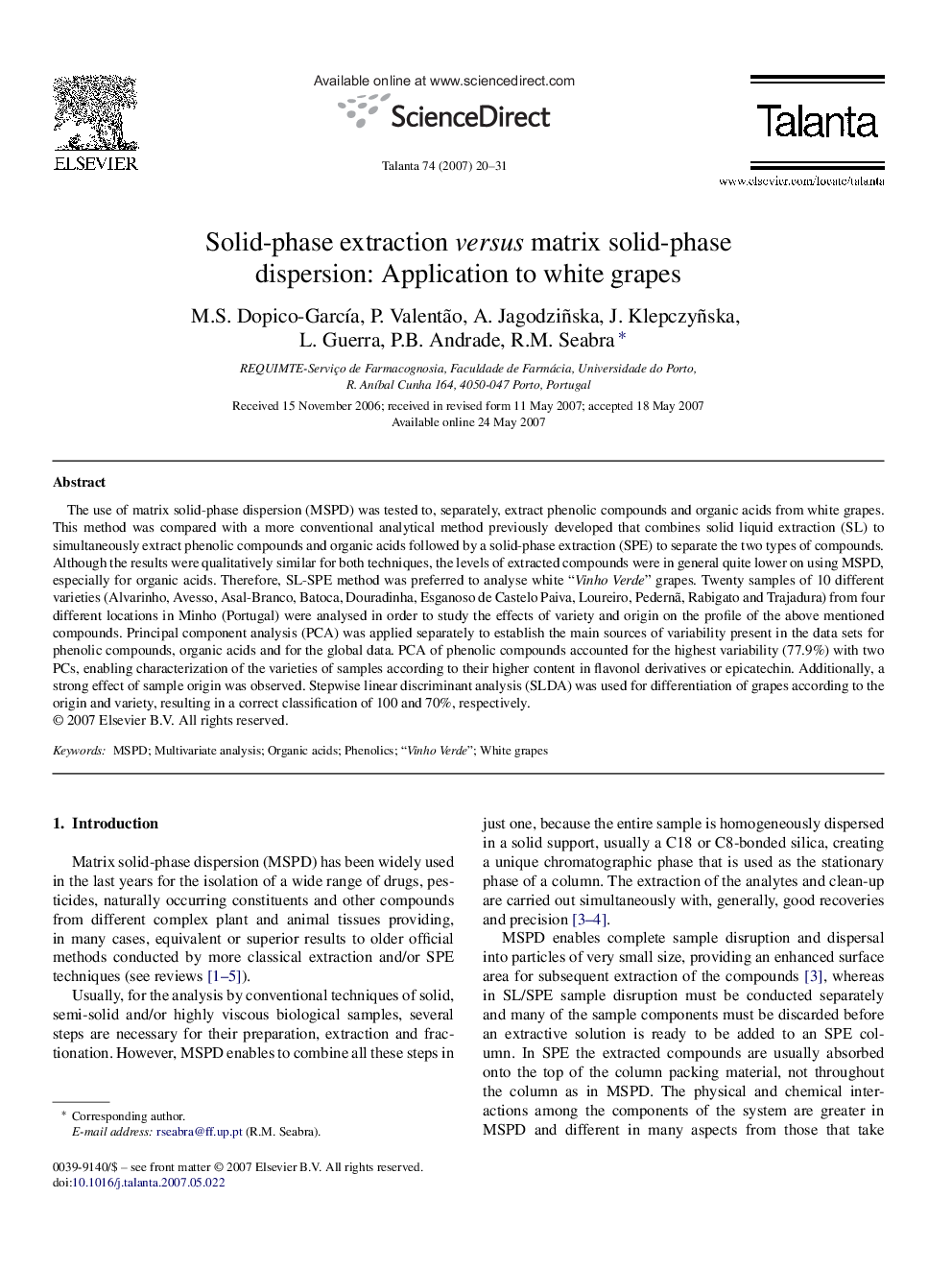| Article ID | Journal | Published Year | Pages | File Type |
|---|---|---|---|---|
| 1245810 | Talanta | 2007 | 12 Pages |
The use of matrix solid-phase dispersion (MSPD) was tested to, separately, extract phenolic compounds and organic acids from white grapes. This method was compared with a more conventional analytical method previously developed that combines solid liquid extraction (SL) to simultaneously extract phenolic compounds and organic acids followed by a solid-phase extraction (SPE) to separate the two types of compounds. Although the results were qualitatively similar for both techniques, the levels of extracted compounds were in general quite lower on using MSPD, especially for organic acids. Therefore, SL-SPE method was preferred to analyse white “Vinho Verde” grapes. Twenty samples of 10 different varieties (Alvarinho, Avesso, Asal-Branco, Batoca, Douradinha, Esganoso de Castelo Paiva, Loureiro, Pedernã, Rabigato and Trajadura) from four different locations in Minho (Portugal) were analysed in order to study the effects of variety and origin on the profile of the above mentioned compounds. Principal component analysis (PCA) was applied separately to establish the main sources of variability present in the data sets for phenolic compounds, organic acids and for the global data. PCA of phenolic compounds accounted for the highest variability (77.9%) with two PCs, enabling characterization of the varieties of samples according to their higher content in flavonol derivatives or epicatechin. Additionally, a strong effect of sample origin was observed. Stepwise linear discriminant analysis (SLDA) was used for differentiation of grapes according to the origin and variety, resulting in a correct classification of 100 and 70%, respectively.
